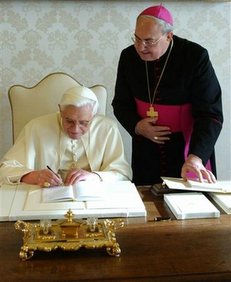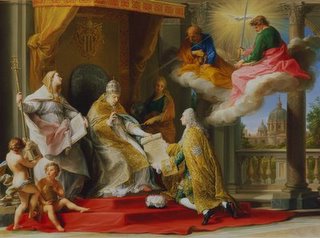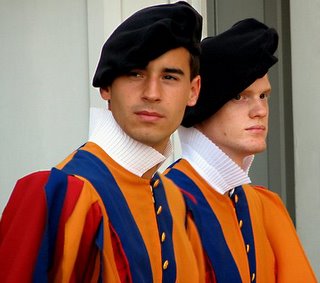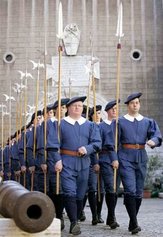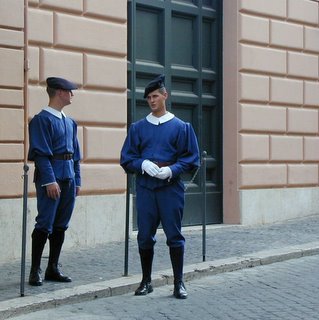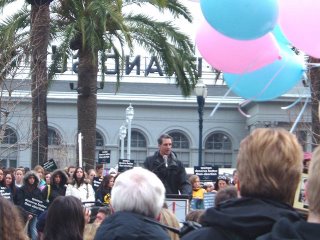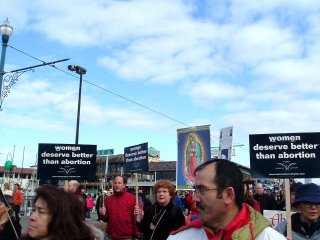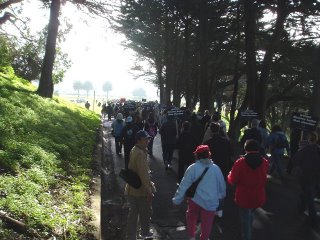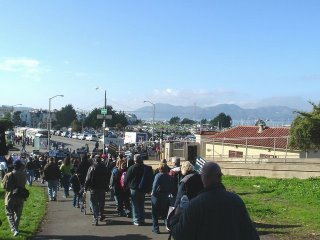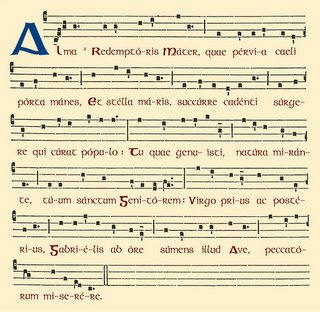God blesses EWTN with 25 Years
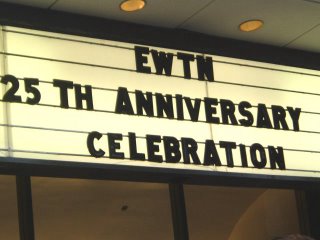 The 25th anniversary celebration of the Eternal World Television Network (EWTN) held in San Francisco was a great blessing and a weekend filled with many graces and blessings. Almost the entire EWTN personalities were there including about 80 of their employees manning the stage, the booths and the bookstore. If you have been touched by the EWTN programming like I have, you may consider promoting them in parishes, hospitals and nursing homes by clicking here or by simply sending in a donation.
The 25th anniversary celebration of the Eternal World Television Network (EWTN) held in San Francisco was a great blessing and a weekend filled with many graces and blessings. Almost the entire EWTN personalities were there including about 80 of their employees manning the stage, the booths and the bookstore. If you have been touched by the EWTN programming like I have, you may consider promoting them in parishes, hospitals and nursing homes by clicking here or by simply sending in a donation. 
Deacon Bill Steltemeier, Chairman of EWTN and a few of the nuns at Our Lady of the Angels Monastery, including the Mother Vicar, Sister Mary Catherine, spoke about the fruits of the twenty five years of hard work that God had entrusted to Mother Angelica and the network. To know more about Mother Angelica's health condition and to offer your prayers, click here.
 Raymond Arroyo, news director and host, gives a book signing. He is the author of Mother Angelica: The Remarkable Story of a Nun, Her Nerve, and a Network of Miracles. His book is now a bestseller and he once said "I am the only homeless man on the New York Times Bestseller list! " He asked that we pray for him so that he and his family can find a new home after Hurricane Katrina.
Raymond Arroyo, news director and host, gives a book signing. He is the author of Mother Angelica: The Remarkable Story of a Nun, Her Nerve, and a Network of Miracles. His book is now a bestseller and he once said "I am the only homeless man on the New York Times Bestseller list! " He asked that we pray for him so that he and his family can find a new home after Hurricane Katrina.  Poor Clares of Perpetual Adoration known as the "Phoenix Five" because they are the five young nuns from Hansville chosen to start a monastery in Phoenix upon the invitation of Bishop Thomas J. Olmstead of the Diocese of Phoenix. Here in this photo are Sr. Esther Marie and Sr. Marie St. Paul. Sr. Marie Andre is in the background. They are beautiful cloistered nuns who received a special dispensation from the Bishop to attend the anniversary celebration. Although this was part of their work of evangelization, they said they could not wait to go back home to the monastery to be with Jesus. What a beautiful witness to the world.
Poor Clares of Perpetual Adoration known as the "Phoenix Five" because they are the five young nuns from Hansville chosen to start a monastery in Phoenix upon the invitation of Bishop Thomas J. Olmstead of the Diocese of Phoenix. Here in this photo are Sr. Esther Marie and Sr. Marie St. Paul. Sr. Marie Andre is in the background. They are beautiful cloistered nuns who received a special dispensation from the Bishop to attend the anniversary celebration. Although this was part of their work of evangelization, they said they could not wait to go back home to the monastery to be with Jesus. What a beautiful witness to the world. 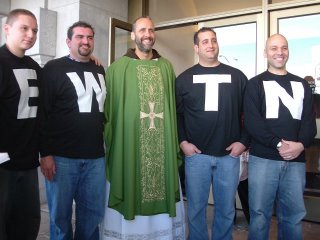
Father Francis Mary Stone, MFVA is a great witness to young men for vocations to the priesthood and religious life. Seen here with four young men with custom-made T-shirts that said at the back "Real men watch...." And the rest you can figure out for yourself. If any of you young men out there who think you may be called to the priesthood or religious life, check out the Franciscan Missionaries of the Eternal Word.

